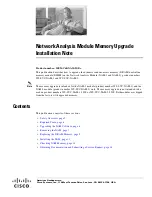
360050398
Toshiba Corporation Digital Media Network Company
Page
110
of
157
© 2005, Copyright TOSHIBA Corporation All Rights Reserved
e) If the device is in the process of performing the subcommand routine and is interrupted by a SMART
DISABLE OPERATIONS command from the host, the device will abort the subcommand routine and
service the host within two seconds after receipt of the command.
f) If the device is in the process of performing the subcommand routine and is interrupted by a SMART
EXECUTE OFF-LINE IMMEDIATE command from the host, the device will abort the subcommand routine
and service the host within two seconds after receipt of the command. The device will then service the
new SMART EXECUTE OFF-LINE IMMEDIATE subcommand.
g) If the device is in the process of performing the subcommand routine and is interrupted by a STANDBY
IMMEDIATE or IDLE IMMEDIATE command from the host, the device will suspend or abort the
subcommand routine, and service the host within two seconds after receipt of the command. After
receiving a new command that causes the device to exit a power saving mode, the device will initiate or
resume the subcommand routine without any additional commands from the host unless these activities
were aborted by the host.
h) While the device is performing the subcommand routine it will not automatically change power states (e.g.,
as a result of its Standby timer expiring).
If an error occurs while a device is performing a self-test routine the device may discontinue the testing and
place the test results in the Self-test execution status byte.
10.8.42.5.2 Captive mode
When executing a self-test in captive mode, the device sets BSY to one and executes the self-test routine after
receipt of the command. At the end of the routine the device places the results of this routine in the Self-test
execution status byte and executes command completion. If an error occurs while a device is performing the
routine the device may discontinue its testing, place the results of this routine in the Self-test execution status
byte, and complete the command.
10.8.42.5.3 SMART off-line routine
This routine will only be performed in the off-line mode. The results of this routine are placed in the Off-line
data collection status byte.
10.8.42.5.4 SMART Short self-test routine
Depending on the value in the Sector Number register, this self-test routine may be performed in either the
captive or the off-line mode. This self-test routine should take on the order of ones of minutes to complete.
10.8.42.5.5 SMART Extended self-test routine
Depending on the value in the Sector Number register, this self-test routine may be performed in either the
captive or the off-line or mode. This self-test routine should take on the order of tens of minutes to complete.
10.8.42.5.6 SMART Selective self-test routine
When the value in the LBA Low register is 4 or 132, the Selective self-test routine shall be performed. This
self-test routine shall include the initial tests performed by the Extended self-test routine plus a selectable read
scan. The host shall not write the Selective self-test log while the execution of a Selective self-test command is
in progress.
The user may choose to do read scan only on specific areas of the media. To do this, user shall set the test
spans desired in the Selective self-test log and set the flags in the Feature flags field of the Selective self-test log
to indicate do not perform off-line scan. In this case, the test spans defined shall be read scanned in their
entirety. The Selective self-test log is updated as the self-test proceeds indicating test progress. When all
specified test spans have been completed, the test is terminated and the appropriate self-test execution status is
reported in the SMART READ DATA response depending on the occurrence of errors. The following figure
shows an example of a Selective self-test definition with three test spans defined. In this example, the test
terminates when all three test spans have been scanned.















































